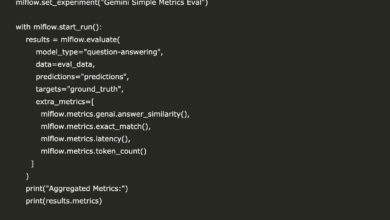Data Lake

Sata Lake is a central storage warehouse designed to keep large sizes of raw data and not equipped with their original format so that it is required for analyzes. It accommodates all types of data, the source of different systems, without any pre -defined structure or organization. Data lakes are able to store organized, semi -organized and unorganized data on a large scale, using a flat structure consisting primarily of the object files or storing the object. These warehouses act as a major data location before organizing or analyzing them.
a descriptionThese data lakes are hosted on cloud platforms such as AWS, Azure or Google Cloud. It provides expansion on demand, cost efficiency, and payment forms.
ExpansionEasy measures to deal with large amounts of data.
Cost efficiencyIt reduces costs by paying the resources used only.
Flexibility: Supports various data formats without pre -defined schemes.
a descriptionThese data lakes are deployed within the institution’s infrastructure. It provides full control of data security and compliance, but it requires a large investment provided in devices and maintenance.
protectionProvides improved control and access to data.
compliance: Easiest to ensure compliance with policies and internal regulations.
a description: Mixed data lakes combine cloud infrastructure and precautions, providing flexibility in storing and processing data. This preparation allows institutions to benefit from the benefits of both models.
FlexibilityIt is allowed to store local sensitive data while taking advantage of the cloud expansion of other data.
Cost improvement: The cost balance and performance using cloud resources for developed tasks.
a description: This data lakes use the Hadoop (HDFS) file system to store and process large data collections. It is often used to process payments and is costly effective to deal with large data.
Cost effectiveIt provides an effective cost solution to deal with large quantities of data.
ExpansionHighly developed for huge data environments.
Enter data and access to it
a descriptionData lakes make data within the reach of all stakeholders across the institution, which allows the decisions based on data at each level.
democracy: The middle administration and other teams are allowed to access data without relying on it, and to promote decentralized decisions.
accessibilityIt provides self -service tools for users to explore and analyze data independently.
The ability to expand and cost efficiency
a descriptionData lakes provide developmentable storage solutions that can handle large quantities of data at a lower cost compared to traditional data warehouses.
ExpansionIt easily accommodates the growing databases without significant infrastructure promotions.
Cost efficiencyIt reduces storage costs by taking advantage of storing cloud organisms and services.
Flexibility in storing and analyzing data
a descriptionStoring data lakes in raw form, which provides the elasticity of the plan and the ability to analyze data using different tools and languages.
The elasticity of the schemeData analysis without pre -defined plans enables ideal for exploratory analyzes.
Multi -language supportSupports SQL and other languages such as Python, R and Spark to meet the needs of various analyzes.
Advanced analyzes and machine learning
a descriptionData lakes provide the basis for advanced analyzes and machine learning by storing various types of data, including organized, semi -organized and unorganized data.
Automated learningIt is easy to use machine learning algorithms for predictive analyzes and deep learning.
Real time visionsDecision making in actual time by quickly processing large data groups.
a descriptionData lakes focus on different sources, eliminate data silos and ensure that all stakeholders can reach comprehensive visions.
UniformIt provides one source of the truth of organizational data, enhancing cooperation and reducing the frequency of data.
Improving visionsIt combines various data sources to reveal new visions and relationships.
Maintaining data in the long run
a descriptionData lakes allow the unspecified data storing, ensuring that there are no data groups and the empowerment of analysis and discovery in the future.
Keep dataStore for long periods of data, allowing historical analysis and research in the future.
Future resistance: Supports the needs of advanced analyzes by keeping data for potential future use.
Media systems and recommendation systems
a descriptionBroadcasting services that use data lakes are used to collect visions around the customer’s behavior, such as habits and preferences. This data is used to improve the recommendation algorithms, enhance the user’s participation and keep it.
example: Netflix enhances data lakes to analyze the user behavior and customize content recommendations.
Financial services and risk management
a descriptionInvestment and bank companies use data lakes to manage portfolio risks by analyzing market data in actual time. This helps in making enlightened investment decisions and ensuring compliance with financial regulations.
exampleInvestment companies use data lakes to process modern data to manage effective risks.
Improving health care and patient care
a descriptionHealth care institutions use data lakes to store and analyze large quantities of patient data. This helps to simplify the patient’s paths, improve the quality of care, and reduce costs.
exampleHospitals benefit from data lakes to analyze historical data and improve patient care processes.
Omnichannel retail and customer visions
a description: Retail dealers use data lakes to unify data from multiple customer touch points, including mobile reactions, social media and interactions inside the store. This provides a 360 -degree angle for customer behavior, allowing dedicated marketing and improving the value of the customer’s life.
exampleZalado moved to a data lake to unify customer data and improve data inquiries.
The Internet of Things and analyzes in actual time
a descriptionInternet of Things devices create huge amounts of semi -organized and unorganized data. Data lakes provide a developed depot of these data, support in actual time and visions in the performance of the device and environmental conditions.
exampleSamsara uses data lakes to inquire about the Internet of Things data and analyze it, and to ensure reliability and expansion.
Improving the digital supply chain
a descriptionManufacturers use data lakes to unify the diverse data from different sources, such as Edi Systems and Json Files. This helps improve supply chain processes and improve logistical efficiency.
exampleData lakes support warehouse data integration for simplified operations.
Business services in real time and compliance
a descriptionData lakes allow data to swallow in actual time, making business data available around the clock throughout the week. This is very important for important applications such as banking programs and clinical decisions, where continuous operation is necessary.
exampleReal time availability is available in financial transactions without interruption and health care services.
Automated learning and predictive analyzes
a descriptionProvides data lakes for automated learning and predictive analyzes by storing various types of data. This supports tasks such as predictive modeling, analysis of feelings, and detection of abnormalities.
exampleUber uses data lakes for actual time analyzes, supporting improved path and fraud.
What types of data can be stored in the data lake?
Data lakes can store organized, semi -organized and unorganized data. This includes text, photos, videos, JSON, CSV and more, allowing institutions to manage a wide range of data formats.
How does the data lake differ from the data warehouse?
The data lake stores the initial data without pre -defined plans, while the data warehouse stores the data organized with pre -defined charts. Data lakes are used for exploratory analyzes and data science, while data warehouses are improved for business intelligence and reports preparation.
What are the benefits of using a data lake?
Benefits include expansion, cost efficiency, flexibility in data analysis, and the ability to deal with large amounts of diverse data. Data lakes support both actual time processing, making them suitable for the needs of different analyzes.
What are some challenges related to data lakes?
Common challenges include data quality problems, governance complications, and possible performance problems due to unlimited data formats. Data security and prevent data lakes from becoming a “data swamps” are also important.
How is data lakes implement on cloud platforms?
Data lakes are often performed on cloud platforms such as AWS, Azure and Google Cloud, which provide developmental storage solutions such as S3, ADLS and GCS. These platforms provide an effective and flexible infrastructure for managing large data collections.
What are the best practices for data management in the data lake?
Best practices include applying powerful data governance policies, ensuring data quality through checks and descriptions, and using descriptive data to regulate and discover data efficiently.
How does data safety in the data lake guarantee?
Data safety guarantee includes the implementation of accurate access control elements, data encryption in both transit and comfort, and integration with safety services provided by cloud platforms.
For the latest news, exclusive and videos on WhatsApp
2025-03-27 05:53:00




